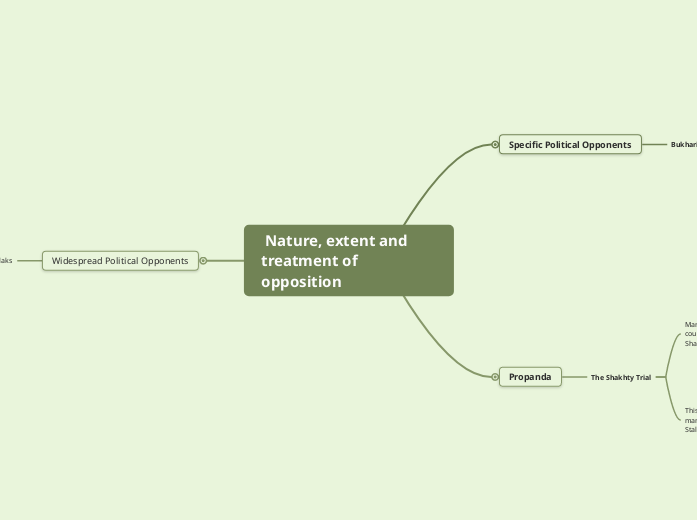by Lillian Jane Baxter 9 months ago
53
Nature, extent and treatment of opposition

by Lillian Jane Baxter 9 months ago
53

The result of collectivization was the death of 4-5 million people in 1932-3 from ‘dekulakization’ and grain seizures.
Some officials were horrified at the effects, but did not criticise mass compulsory collectivisation as general policy.
While the government’s policies were killing peasants, peasants were killing and eating their livestock rather than letting them be expropriated by collective farms.
Child survivors ate grass and tree-bark and begged for crusts.
The dead and dying were piled onto carts by the urban detachments and pitched into common graves - pits were dug outside the villages for that purpose.
This decree could not be executed with the Red Army and OGPU - their numbers were insufficient, and the Politburo could not depend on the implicit obedience of officers of rural origins.
25,000-ers
They were not issued with instructions of how to distinguish the poor, middling, and rich peasants from each other, nor given any limits on use of violence.
When the ‘25,000-ers’ arrived in the villages, they saw that many hostile peasants were far from being rich. As a result the central party apparatus invented the ‘sub-kulaks’ - those not not rich enough to be kulaks but who opposed the government. Stalin’s persecution was not restricted to better off households.
Approximetely 25,000 young thugs from factories, the militia, and the party went out to the villages to enforce the establishment of collective farms. The ‘25,000-ers’ were told that the kulaks were responsible for organising a ‘grain strike’ against the town.
It was laid down that collective farms should be formed exclusively from poor and middling peasant households. "Kulaks" were divided into three categories.
Between 5-7 million people were treated as belonging to kulak families.
3) those belonging to the least ‘dangerous’ households were to be allowed to stay in their native district, but on a smaller patch of land.
2) kulaks belonging to households less hostile to the government were to be sent to distant provinces,
1) those from households most hostile to the government were to be dispatched to forced-labour settlements or shot
Stalin took close interest in the decisions made about the engineers.
The engineers were physically abused by the OGPU Forced to memorise self-incriminations and paraded in a show trail in May and June 1928. This ended with 5 of the miners being executed and many others being given long sentences.
Managers and economists were pressured to meet unrealistic production targets set by the Gosplan (the State Planning Committee), knowing that failure to comply could result in dismissal, imprisonment, or even execution.